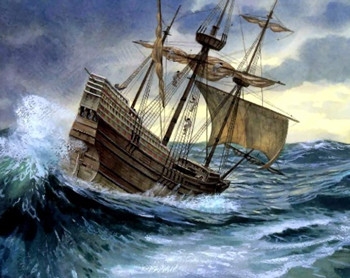
Just over 500 years ago, Europeans arrived in North America. And with these colonizers came an animal that hadn’t been seen here for thousands of years. The horse returned to the Americas, now tamed and carrying the Spanish conquistadors. This new form of transport was rapidly adopted by the native people, which was bad news for some native animals.
就在500多年前,歐洲人來(lái)到了北美大陸。隨著這些殖民者的到來(lái),北美大陸也迎來(lái)了一個(gè)新物種,這個(gè)物種在北美大陸過(guò)去的千年歷史中從未出現(xiàn)。馬兒來(lái)到了北美洲,并且載著他們的主人——西班牙殖民者。這種新型交通工具很快就被當(dāng)?shù)赝林怂捎茫@對(duì)于北美大陸的一些動(dòng)物來(lái)說(shuō)可不是條好消息。
Bison had once lived alongside the wild horses of North America, and had prospered at the end of the Ice Age while the horses became extinct. But now the new tame horse became the bison’s enemy.
北美犀牛曾和野馬共同生活在北美洲,在冰河時(shí)代末期,野馬滅亡,而犀牛卻幸存并壯大。但是現(xiàn)在這些被馴服的新種馬兒卻成了犀牛的敵人。
The horse’s speed and stamina gave native people an advantage over their prey that they never had before.
馬的速度快,耐力強(qiáng),這使土著人在進(jìn)行打獵時(shí)有了前所未有的優(yōu)勢(shì)。
The horse was an even bigger ally to the increasing number of European settlers spreading out across the continent. They killed millions of bison for their meat and hides.
同樣,馬兒也更大程度地幫助了越來(lái)越多的歐洲殖民者擴(kuò)大他們殖民的步伐。這些殖民者為了犀牛肉和犀牛皮殘殺了數(shù)百萬(wàn)頭犀牛。
英文文本來(lái)自普特英語(yǔ),譯文屬可可原創(chuàng),僅供學(xué)習(xí)交流使用,未經(jīng)許可不得轉(zhuǎn)載。











